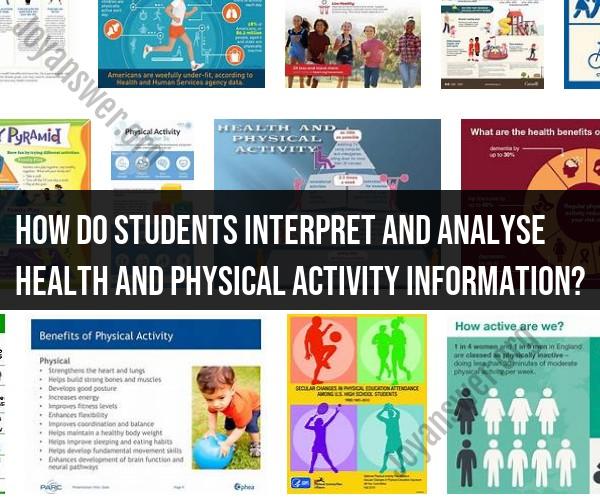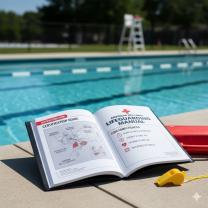How do students interpret and analyse health and physical activity information?
Interpreting and analyzing health and physical activity information from an educational perspective involves critically examining data, research, and resources related to these topics. It aims to develop a deeper understanding of the implications of health and physical activity on individuals, communities, and society as a whole. Here's how students can approach this process:
1. Understanding the Context:
- Begin by understanding the context in which the health and physical activity information is presented. Consider factors such as target audience, purpose, and sources of the information.
2. Evaluating Sources:
- Assess the credibility and reliability of the sources of information. Look for reputable and peer-reviewed sources, such as scientific journals, government publications, and recognized health organizations.
3. Data Analysis:
- If dealing with quantitative data, analyze trends, patterns, and statistics related to health and physical activity. Use tools like graphs, charts, and tables to visualize the data.
4. Identifying Key Messages:
- Determine the main messages or findings conveyed by the information. Highlight key takeaways that provide insights into health outcomes, physical activity guidelines, or related topics.
5. Considering Multiple Perspectives:
- Acknowledge that health and physical activity are multidimensional topics. Consider various viewpoints, including cultural, social, economic, and environmental factors.
6. Relating to Educational Objectives:
- Connect the information to educational objectives. How does the data align with promoting health and physical activity awareness in educational settings? How can this information contribute to curriculum development?
7. Applying Theoretical Frameworks:
- Consider applying relevant educational theories or models to interpret the information. For example, how does the Health Belief Model or Social Cognitive Theory apply to the presented data?
8. Implications for Practice:
- Discuss the practical implications of the information for educators, students, and the community. How can this knowledge be translated into actionable steps to promote healthier lifestyles?
9. Addressing Health Disparities:
- Explore whether the information highlights health disparities among different populations. Discuss how educational initiatives can address these disparities and promote health equity.
10. Ethical Considerations:- Reflect on ethical considerations related to the information. Ensure that interpretations and analyses are unbiased and consider potential conflicts of interest.
11. Communication Skills:- Develop effective communication skills to convey the analyzed information clearly and persuasively. This can include written reports, presentations, or educational materials.
12. Reflecting and Applying:- Reflect on how the interpreted information influences your own understanding of health and physical activity. Consider how you can apply this knowledge to your personal life and future educational endeavors.
Interpreting and analyzing health and physical activity information from an educational perspective empowers students to make informed decisions, contribute to health promotion initiatives, and advocate for healthier lifestyles within educational contexts and beyond.













